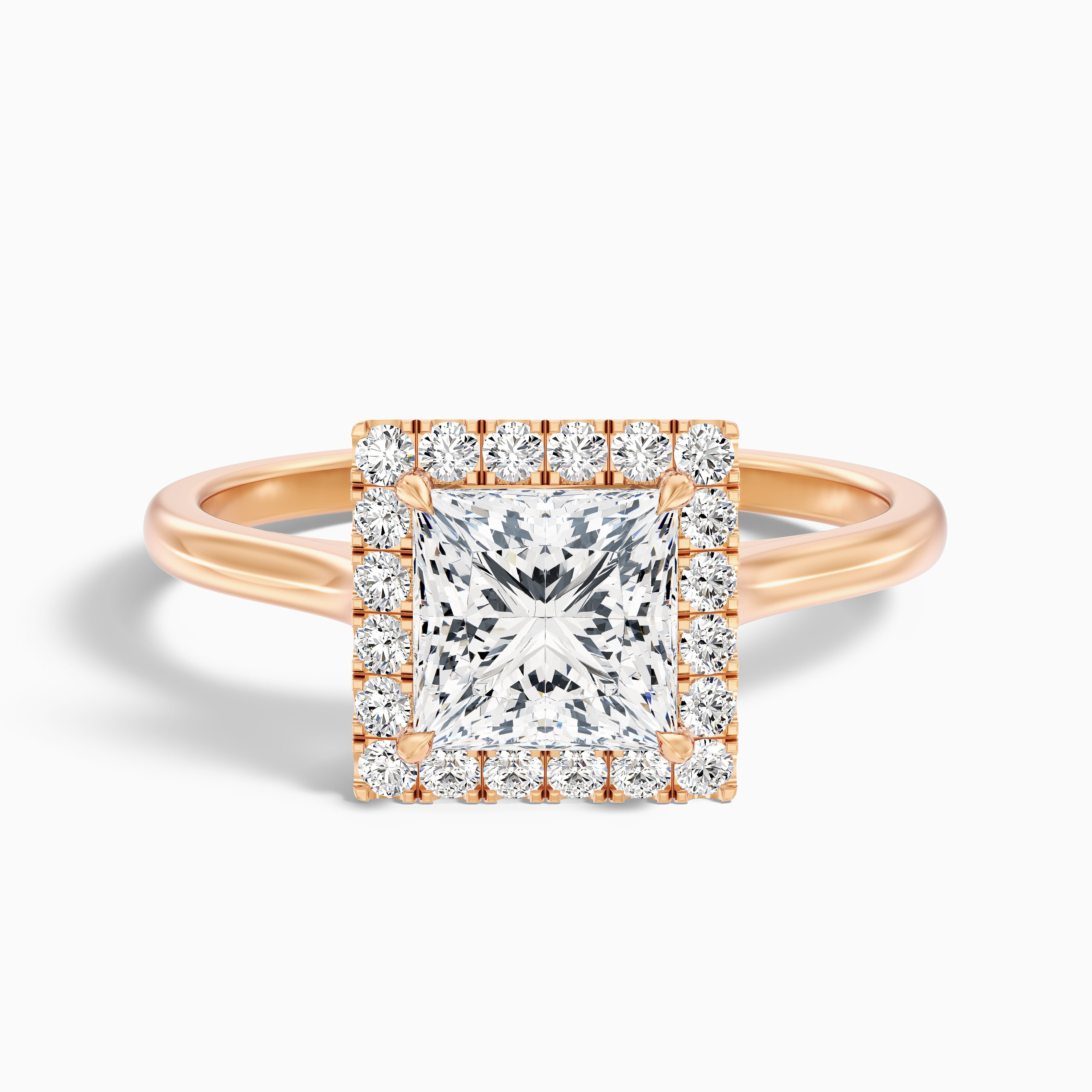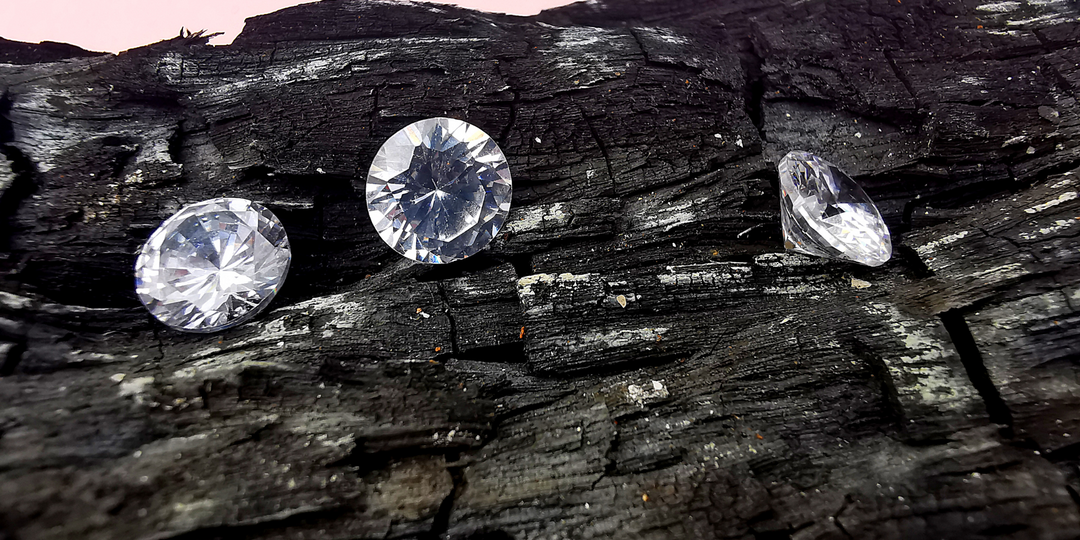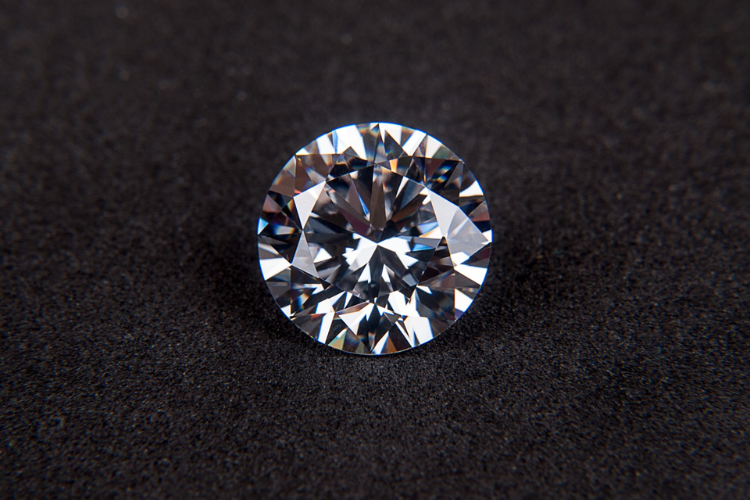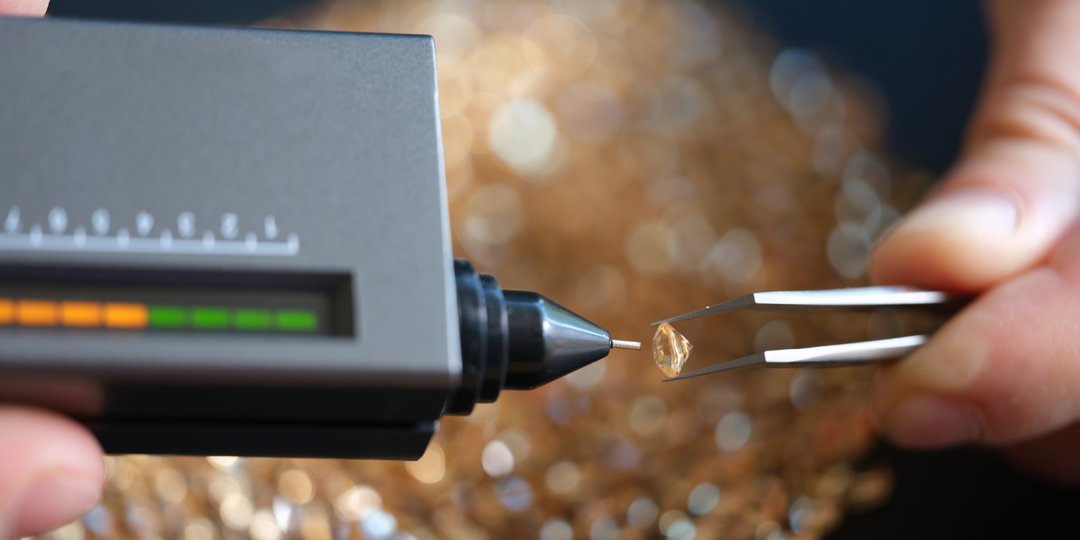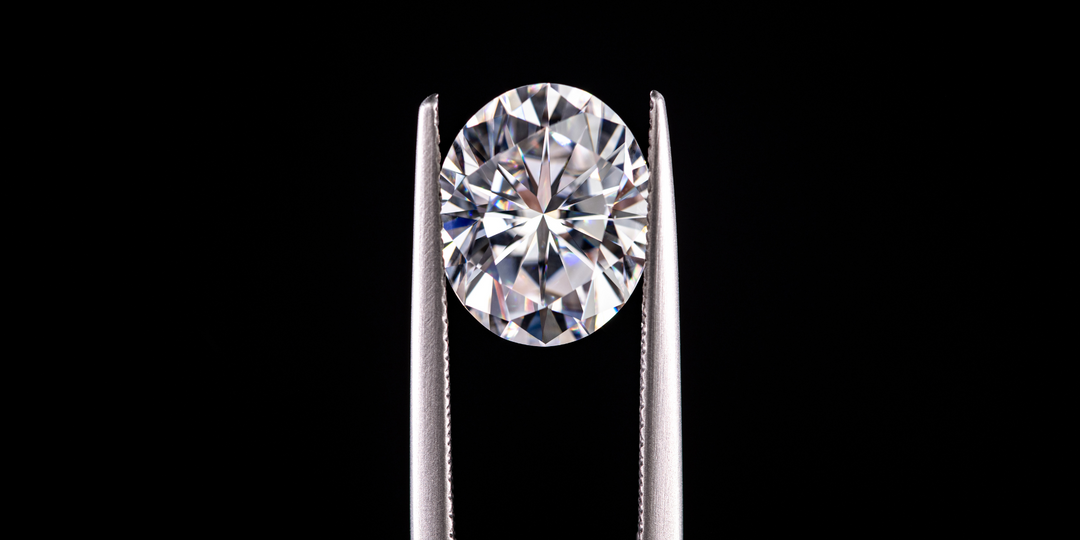Best Natural Diamond Alternative For Your Engagement Ring Choose
When it comes to engagement rings, diamonds have always been the classic choice, right? But things are changing! More and more eco-conscious shoppers are on the lookout for alternatives. Whether you want something unique or you’re mindful of ethical issues, diamond alternatives are gaining popularity. In this blog post, I’ll help you navigate the best natural diamond alternatives for your engagement ring so you can make a smart and eco-friendly choice!
Why Consider Diamond Alternatives?
Are you thinking about diamond alternatives? That can be a smart move for a bunch of reasons! First, traditional mined diamonds can cost us more, leading to breaking the bank and coming with some ethical worries, like environmental impact and labor practices. These mined diamonds are also known as "blood diamonds".
Lab grown diamonds are an eco-friendly and ethical choice since they are made in the lab without the need for mining. Another thing is they are chemically and physically just like mined diamonds so that's why we call them real diamonds. Lab grown diamonds are usually much cheaper than mined diamonds.
And if you are looking for other options, you've got moissanite, cubic zirconia, white sapphire, white topaz, emerald, aquamarine, and morganite. This eight-diamond alternative is a popular choice for the diamond lover. These gems can look just like diamonds but this comes at a fraction of the price. which is perfect if your budget is limited.
Moissanite is super durable and has a sparkle that's similar to diamonds, while cubic zirconia is a budget-friendly option for fashion jewelry which we wear regularly. We will discuss in depth all alternative diamonds. Choosing diamond alternatives opens up your options for design and budget, making it easier to find something that matches your style and values!
8 Popular Diamond Alternatives
Moissanite The Top Diamond Alternative
If you are looking for a gemstone that rivals the brilliance and durability of diamonds, moissanite is the best option. Moissanite, discovered in a meteor crater over a century ago, is a rare and naturally occurring mineral. However, most moissanite available today is lab created which makes it more accessible and eco-friendly.
One of the important features of moissanite is its exceptional brilliance. Moissanite has a higher refractive index(the stone's ability to bend light) than diamonds, meaning it sparkles even more. Its hardness is also impressive, scoring 9.25 on the Mohs scale, making it highly resistant to scratches and suitable for daily wear.
Another significant advantage is the cost of this diamond. Moissanite is much more affordable than natural diamonds allowing you to get a larger or higher quality stone at a low cost which can save you money. For these reasons, moissanite is often considered the top diamond alternative after lab grown diamond for those who want both beauty and durability
Lab Grown Diamonds The Closest to Natural Diamonds
For those who love the idea of having a real diamond but are concerned about the price and ethical questions then lab grown diamonds offer the perfect solution. These diamonds are created in a laboratory under observation, mimicking the natural conditions that form diamonds deep within the earth so essentially, scientists in laboratories are creating lab diamonds by replicating the same processes used to form traditional diamonds.
Lab grown diamonds have the same properties as natural diamonds whether chemically, physically, or optically. They offer the same sparkle, clarity, and durability which makes them almost impossible to distinguish from their natural counterparts. Plus they come with many benefits like being more environmentally friendly and ethically produced.
Cost is another area where lab grown diamonds shine. They are 60-90% less expensive than natural diamonds, making them a budget-friendly option. This allows you to get a high-quality diamond without the ethical concerns or the hefty price tag associated with mined diamonds.
White Sapphire A Classic and Affordable Option
White sapphires are another excellent alternative diamond. While they may not have the same fire and sparkle as diamonds or moissanite, they are still stunning in their own right. They can sometimes appear slightly cloudy or milky, especially if they are not treated.
White sapphires are a colorless variety of the mineral corundum, which also includes rubies. They score a 9 on the Mohs scale of hardness making them highly durable and suitable for everyday wear.
White sapphires can be found naturally, though they are rare, and are often lab created to meet demand. Lab grown white sapphires share the same physical and chemical properties as natural ones making them nearly indistinguishable.
These sapphire gemstones are often used in engagement rings and other fine jewelry due to their sparkle and affordability. Additionally, white sapphires are believed to carry metaphysical properties, symbolizing purity, wisdom, and clarity, and are thought to promote mental clarity and emotional balance.
Morganite A Beautiful Blush-Pink Gemstone
Morganite is another alternative to diamond. Morganite is a beautiful gemstone that belongs to the beryl family, which also includes emerald and aquamarine. It has this lovely pink-to-orange-pink color, thanks to little bits of manganese. Morganite was found in Madagascar back in 1940, it was named after famous financier JPMorgan, who was a big gem collector and supporter of the arts and sciences.
What's new about morganite is that it is pleochroic which means it can show different colors depending on the angle you are looking from - usually a soft pale pink and a richer bluish pink. Plus it is very tough with a Mohs hardness of 7.5 to 8, making it perfect for everyday jewelry. Many people even choose it as a beautiful and affordable alternative to diamonds for engagement rings!
Morganite is mostly mined in places like Brazil, Afghanistan, Mozambique, Namibia, the U.S., and Madagascar. High-quality morganite is rare and you will often find it in larger sizes because of the smaller stones which are lighter in color.
On top of its stunning looks morganite is believed to have some healing vibes too. People say it can help cleanse your emotional body, attract love, and inspire joy and appreciation for life. Whether you are looking at its beauty or its rumored metaphysical perks, morganite is a gemstone that brings both elegance and a bit of history!
Emerald A Striking Green Gemstone
Emeralds are one of the most valuable gemstones, renowned for their vibrant green color. They belong to the beryl mineral family which we have already talked about and their striking color comes from small amounts of chromium and sometimes vanadium. Did you know that people have been loving emeralds for over 5000 years? Ancient civilizations in Africa, Asia, and South America all discovered and valued these gems independently.
These gemstones are found in a few locations worldwide which include Colombia, Zambia, and Brazil. Their green shades can vary from bluish-green to a bit yellowish-green, but the most sought-after ones flaunt a deep, rich green with great transparency. Though almost all natural emeralds have inclusions or surface fractures which jewelers often treat with oils or other substances to enhance their appearance. Even despite their hardness, these inclusions can make emeralds somewhat fragile compared to other gemstones.
Besides their beauty, emeralds carry a lot of cultural and historical weight. They are May's birthstone and are often linked with themes of rebirth, love, and fertility. Emeralds have also been a part of royal jewelry and significant artifacts throughout history, symbolizing power and wealth. Whether set in rings, necklaces, or other jewelry, emeralds continue to be a symbol of elegance and timeless beauty.
Cubic Zirconia A Popular Budget-Friendly Option
Cubic zirconia (CZ) is a synthetic gemstone that’s become a popular, budget-friendly alternative to diamonds. Made in a lab using zirconium dioxide, it shines bright and sparkles just like a diamond. One reason it's so affordable is that it’s super easy to produce—unlike diamonds, which need a lot of mining and cutting, CZ can be made in bulk in a controlled setting. This not only keeps costs down but also usually means you get a high-quality stone, free from the flaws often found in natural diamonds.
CZ comes in different grades, from A to AAAA, with the top grades offering the best clarity, cut, and color. Even though it's cheaper, it's still pretty durable, although it might scratch over time since it's not as hard as a diamond. Plus, it’s versatile, available in a variety of colors and sizes, perfect for all kinds of jewelry from engagement rings to earrings. If you want the look of a diamond without breaking the bank, cubic zirconia is a fantastic choice that gives you beauty, affordability, and ethical production!
Related Read: Cubic Zirconia vs Lab Grown Diamond: Key Differences
Aquamarine
Aquamarine is such a gorgeous gemstone! Its stunning blue to green-blue hues remind you of the sea. It’s also part of the beryl family, which includes emeralds and morganite. The name “aquamarine” actually comes from Latin—“aqua” means water and “marinus” means of the sea, perfectly reflecting its ocean-like color.
You can mainly find aquamarine in granite pegmatites and hydrothermal veins, where it forms over millions of years. Fun fact: it’s the birthstone for March and is linked to the throat chakra, which is believed to boost communication and ease the fear of speaking. Plus, it has a hardness of 7.5 to 8 on the Mohs scale, so it’s pretty durable for everyday wear!
Historically, people thought aquamarine was the treasure of mermaids, and sailors even used it as a talisman for protection and good luck. Nowadays, it’s loved not just for its beauty but also for its calming and soothing vibes, making it a popular choice for jewelry and meditation.
Pros and Cons of Choosing Alternative Diamonds
If you're considering a unique twist on traditional diamonds, alternative options like cubic zirconia, white sapphire, emerald, morganite, and aquamarine can be both exciting and practical. Each of these gems brings its special flair and benefits, but they also have some downsides. Let’s dive into the pros and cons of choosing these alternative diamonds!
Pros
- Cost-Effective: One of the most significant advantages of alternative diamonds is their affordability. Traditional diamonds can be quite expensive, especially those with high clarity and carat weight. Alternatives like cubic zirconia and white sapphire provide a similar sparkle and brilliance at a fraction of the cost.
- Variety and Uniqueness: Alternative diamonds come in various colors and styles, allowing for more personalized and unique jewelry pieces. For example, emeralds offer a rich green hue, while morganite provides a soft pink color. This variety can make your jewelry stand out and reflect your style.
- Ethical and Sustainable: Many alternative diamonds are more ethically sourced and environmentally friendly than traditional diamonds. Lab grown diamonds, for instance, avoid the ethical issues associated with mining and have a lower environmental impact.
- Symbolic Meaning: Different gemstones carry various symbolic meanings. For instance, emeralds are often associated with renewal and growth, while aquamarine is linked to tranquility and clarity. Choosing a gemstone with a special meaning can add sentimental value to your jewelry.
Cons
- Durability: While diamonds are known for their exceptional hardness and durability, not all alternative gemstones share these qualities. For example, cubic zirconia and morganite are less durable and more prone to scratches and damage over time. This means they may require more care and maintenance.
- Perceived Value: Traditional diamonds are often seen as a symbol of luxury and status. Alternative diamonds, despite their beauty, may not carry the same perceived value or prestige. This can be a consideration if you are looking for an investment piece or something with high resale value.
- Rarity: Natural diamonds are rare, which adds to their allure and value. Many alternative gemstones, especially lab grown ones, do not have the same rarity. This can affect their desirability and uniqueness in the eyes of some buyers.
- Inclusions and Flaws: Some alternative gemstones, like emeralds, are more prone to inclusions and flaws. These imperfections can affect the overall appearance and durability of the stone. While some people appreciate these natural characteristics, others may prefer the clarity of traditional diamonds.
In summary, choosing alternative diamonds can be a great way to find beautiful, unique, and cost-effective jewelry. However, it’s essential to consider factors like durability, perceived value, and rarity when making your decision. By weighing the pros and cons, you can select the gemstone that best fits your needs and preferences.
How to Choose the Best Diamond Alternative for Your Engagement Ring
Diamond alternatives have become increasingly popular due to their affordability, ethical sourcing, and unique aesthetic appeal. Some popular alternatives include moissanite, cubic zirconia, morganite, emerald, white sapphire, and aquamarine.
Each of these gemstones offers distinct advantages and potential drawbacks. For instance, moissanite is known for its brilliance and durability, making it a great choice for everyday wear. Cubic zirconia is an affordable option that closely resembles a diamond but is less durable. Morganite, with its soft pink hue, offers a romantic and unique look but requires more care due to its lower hardness.
Emeralds are prized for their rich green color and historical significance, though they can be more prone to chipping. White sapphires provide a clear, diamond-like appearance and are quite durable, while aquamarine offers a beautiful blue hue and good durability. When selecting a diamond alternative, consider your budget, as some gemstones can be significantly less expensive than diamonds.
Durability is another crucial factor; gemstones like moissanite and white sapphire are more suitable for daily wear compared to softer stones like morganite. Additionally, think about the color and style you prefer. While diamonds are colorless, many alternatives come in various colors, allowing for a personalized touch.
Ethical considerations are also important; lab-created diamonds and gemstones can be a more sustainable and conflict-free option. Finally, consider the maintenance requirements of your chosen gemstone, as some may need more frequent cleaning or special care.
Conclusion
Choosing a diamond alternative for your engagement ring opens up so many exciting options! Whether you love the sparkle of moissanite, the ethical vibes of lab-grown diamonds, or the unique charm of morganite, there’s something for every taste and budget. Just think about things like durability, cost, color, and how it fits with your values.
And don’t forget to check out some resources and chat with professionals to help you make the best choice. After all, your engagement ring is a symbol of love and commitment, so picking a gemstone that truly reflects who you are makes it even more special!


